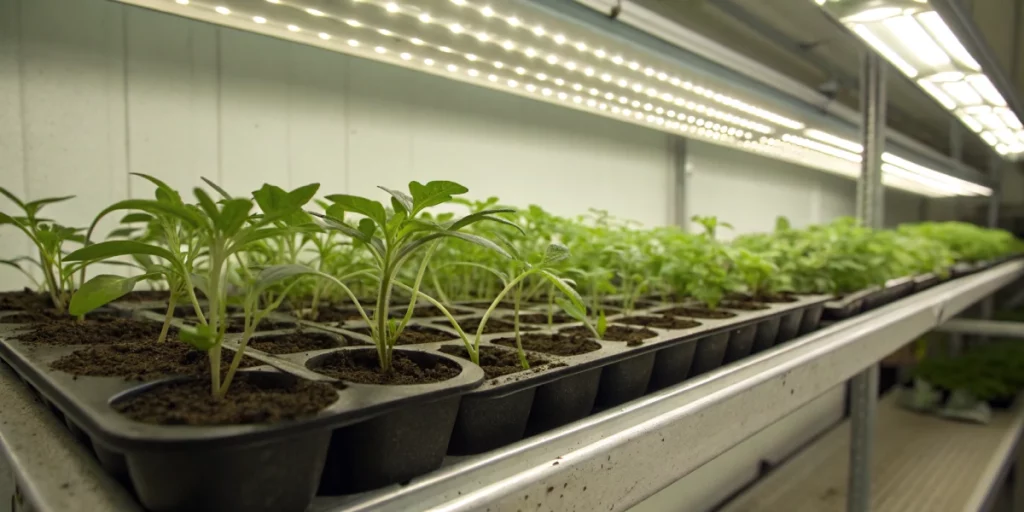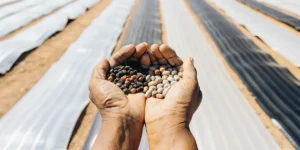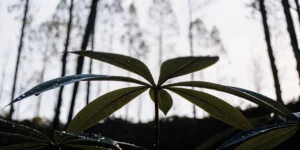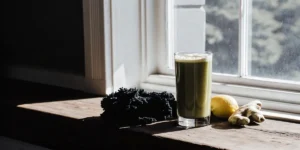Genetic Stability
Consistency with Clones
Clones inherit exact genetic material from a chosen parent plant. Growers gain reliable traits like flavor, potency, and flowering schedule. Since cuttings come from a mature mother, every clone displays uniform growth patterns under similar conditions. This reliability lets cultivators streamline their setup and focus on optimizing environmental factors rather than fighting genetic surprises.
Moreover, uniformity in plant structure helps cultivators space their canopy efficiently. Growers can predict how tall each plant will rise and allocate lighting and nutrients accordingly. This precision translates into a more controlled harvest and consistent batch quality, boosting both efficiency and profit potential.
Variability in Seeds
Seeds deliver genetic diversity that cuttings cannot match. Each seed combines traits from two parent plants, creating subtle variations in plant shape, resin production, and terpene profiles. Growers often encounter “phenotypes” with unique aromas or resin levels, requiring extra time to select the best performers.
Although this diversity demands more attention during the early growth stages, it offers opportunities to discover exceptional traits. Enthusiasts who enjoy trial and error find seeds an exciting way to develop new flavors or cannabinoid ratios. This path suits breeders aiming to craft custom lines or introduce novel cultivar characteristics.
Stability Over Generations
Cloned cuttings maintain genetic stability indefinitely—each new generation replicates the original mother plant’s traits. Growers avoid the effort of regular genetic testing or selection, since every batch of clones preserves the lineage they’ve fine-tuned over time.
On the other hand, seeds require ongoing selection to stabilize desired traits. Breeders must self-pollinate or backcross promising plants over several generations. While this process demands patience, it ultimately leads to stable, true-breeding seed lines. Dedicated breeders reap benefits of custom genetics but they must commit resources and time to secure long-term consistency.
Time to Harvest
Clones’ Head Start
Clones begin life with an established root system and a few nodes. These young cuttings transition quickly into vegetative growth under ideal conditions. Since growers skip the germination phase, clones often reach harvest up to two weeks earlier than seedlings.
This head start lets cultivators cycle more crops per year. More cycles translate directly into higher annual yield and faster returns on investment. For commercial growers or those under tight seasonal windows, clones provide a distinct advantage by compressing the total cultivation timeline without sacrificing plant quality.
Seed Germination Delay
Seeds need heat, moisture, and proper medium to crack open and develop roots. Germination can take anywhere from two to seven days, depending on strain and environment. During this phase, cultivators must monitor moisture closely to prevent drying or rotting.
After roots emerge, seedlings require gentle conditions and low light levels until they establish strong foliage. This delicate stage demands vigilance and can slow down operations, especially when managing large-scale grows. However, with experience, growers learn to optimize germination trays and reduce delays effectively.
Lifecycle Comparisons
From sprout to harvest, seedlings often add an extra two to four weeks compared to clones. Growers must budget for that additional vegetative period to allow strong root and shoot development. Meanwhile, clones jump straight into robust leafy growth, trimming weeks off the cultivation cycle.
Yet, seeds sometimes yield hardier plants with deeper taproots that enhance stability and nutrient uptake. These root systems can thrive in challenging conditions, offering resilience during environmental stress. Cultivators who value robustness over speed may prefer starting from seed despite the longer timeline.

Disease and Pest Risks
Clone Contamination Factors
Cuttings can carry pathogens or pests trapped inside nodes. If a mother plant harbors mites, fungi, or viruses, every clone will inherit those threats. Growers working with resilient genetics like the Triple G Auto strain must still sanitize tools, trim away damaged tissue, and inspect mothers regularly to prevent widespread infestations.
Since clones share identical genetics, any vulnerability to disease runs through the entire crop uniformly. However, vigilant monitoring and quarantine practices can minimize risk. Skilled cultivators implement strict hygiene protocols like sterilizing trays and rotating mother plants to keep pathogens at bay even when dealing with hardy strains like Triple G Auto.
Seed-Borne Issues
While seeds often emerge free of pathogens, they can carry internal fungal spores or viruses transmitted during seed development. Some breeders treat seeds with cold stratification or light bleach dips to reduce surface contaminants.
Yet truly sterile seeds remain rare without commercial-grade lab treatment. Growers must still monitor seedlings for early signs of damping-off or leaf rot. Proper airflow and humidity control in germination chambers lower the risk of disease during those vulnerable first weeks.
Preventive Measures
For clones and seeds alike, proactive prevention serves as the best defense. Cultivators install inline filters on intake fans, prune foliage for airflow, and maintain sterile workspaces. They introduce beneficial microbes or organic foliar sprays to boost plant immunity.
Moreover, regular scouting helps spot pests before they multiply. Sticky traps catch flying invaders, while yellow cards reveal aphid hotspots. By combining environmental controls, biological treatments, and diligent inspection, growers protect every stage from germination to flowering.
Cost Considerations
Upfront Clone Prices
Purchasing clones requires investment per cutting, with prices varying by strain rarity and vendor credibility. Proven genetics command premium rates, and shipping costs for temperature-controlled delivery add up quickly.
Nevertheless, clones eliminate the trial-and-error phase of seed selection. Growers who rely on renowned mother plants gain predictable results without investing in large seed batches. For small-scale or boutique cultivators, that reliability may justify higher per-plant costs.
Seed Pack Value
Seed packs often cost less per potential plant, especially when they contain multiple seeds. Breeders market photoperiod or autoflower seeds at competitive rates, offering a budget-friendly entry point. If only a fraction of seeds germinate or produce ideal traits, growers can discard underperformers without major losses.
However, plants from seeds demand space and resources during selection. Operators must budget for extra trays, media, and lighting. Though seeds lower the cost per unit, the effective cost per harvest-ready plant can match or exceed clones once you factor in culls and extended growth phases.
Long-Term Savings
Clones save space and cut labor time, which translates into lower overhead over multiple harvests. Cultivators reuse root stimulators, cloning gels, and rockwool cubes to minimize recurring expenses. After establishing a healthy mother plant, each new cutting costs virtually nothing beyond utilities.
Conversely, seeds require repeated purchases for new genetics. Unless growers maintain breeding programs to self-produce seeds, they face ongoing costs to refresh or diversify strains. While initial seed investment seems minor, long-term operations often benefit from the cost efficiencies of perpetual cloning systems.
Breeding Opportunities
Creating Hybrids from Seeds
Seeds unlock the power of crossbreeding. Breeders select male and female parents to combine desired traits such as yield, aroma, or resilience. Each cross yields genetically unique offspring, giving rise to experimental phenotypes.
This creative freedom fuels the cannabis industry’s rapid innovation. Amateur and professional breeders craft new strains that cater to consumer trends. By starting from seed, cultivators join a vibrant community that pushes boundaries in flavor, cannabinoid ratios, and flowering speed.
Limitations with Clones
Cloning preserves existing genetics but blocks access to fresh hybrid possibilities. Growers cannot generate novel traits from cuttings alone, since there’s no male pollen involved. They remain limited to the mother plant’s genetic blueprint.
For those aiming to develop exclusive cultivars, clones serve as a backup rather than a breeding tool. Cultivators often keep clones to stabilize parent lines, then return to seeds when they want to create F1 hybrids or experiment with new crossbreed cannabis. Clones complement breeding but can’t replace seed-driven innovation.
Maintaining Parent Genetics
Clones provide a genetic time capsule. Cultivators keep elite traits intact by perpetually rooting new cuttings from the mother. This technique avoids genetic drift that seeds can introduce over generations.
Mother plants stay in vegetative state indefinitely under 18/6 light cycles. Growers prune selectively to maintain vigor and remove unwanted branches. By balancing pruning, fertilization, and environmental controls, cultivators preserve top-tier genetics for years without re-seeding or losing valuable lineage.

FAQs about cannabis clones vs seeds
Which option gives higher yields?
Clones tend to deliver predictable yields since they replicate the parent’s performance. Growers know how heavy each plant will produce under identical conditions. Seeds can surprise with exceptional phenotypes, but average yields vary. A mixed seed batch might produce some underperformers alongside top-tier plants, affecting overall output consistency.
Are clones riskier for pests?
Clones carry the same pests or diseases present in the mother plant. If a mother harbors spider mites or powdery mildew, every cutting faces those threats. Seeds start cleaner, but environmental stress can still invite infestations. Rigorous sanitation and early scouting help control pests for both propagation methods.
Do seeds produce stronger plants?
Seed-grown plants develop taproots that anchor deeply and enhance nutrient uptake. This root system often lends resilience against drought, wind stress, and transplant shock. Clones rely on fibrous root masses that form quickly, but they lack the deep anchoring power of a taproot. For outdoor grows, seeds may yield hardier specimens.





